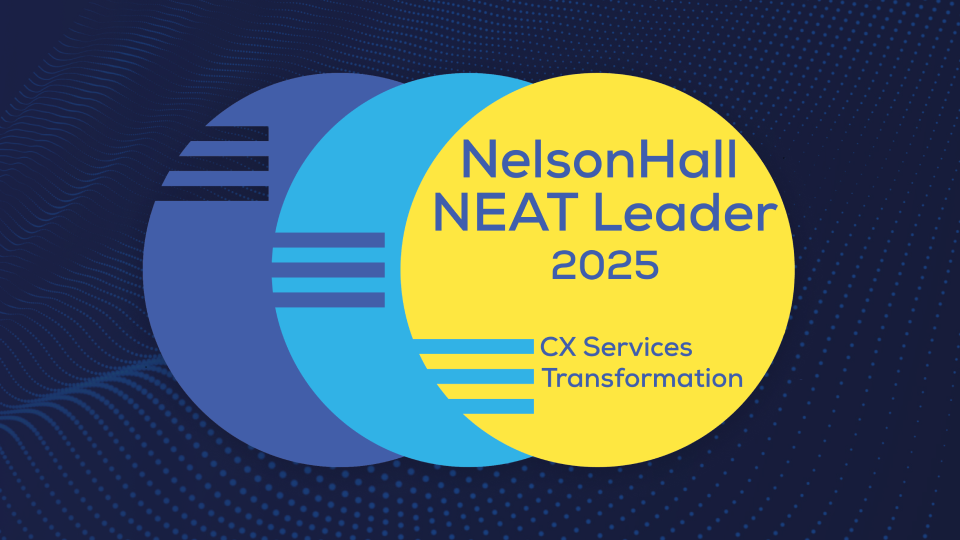The move to value-based healthcare, growing healthcare consumerism, evolving regulations, and now, covid. These pressures combined with thinning margins are forcing Healthcare Providers to evaluate different game plans to enhance the patient experience and drive revenue growth. One strategy many organizations are increasingly turning to leverage Business Process as a Service (BPaaS).
Healthcare BPaaS harnesses the cloud to deliver virtualized services with little or no upfront investment on Providers’ part, driving agility, rapid innovation in new business and care models, and faster application launch.
Meeting greater expectations
Healthcare executives have traditionally been hesitant to adopt the cloud due to security and compliance concerns. The global health crisis has changed this conventional mindset. In its aftermath, hospitals and health systems turned to cloud-based technologies to quickly devise and implement innovative solutions – be it supporting telehealth for patients or remote work for staff. Encouraged by the success they’ve experienced; healthcare leaders are now increasingly open to adopting the cloud.
While cloud-based services are fast becoming a mainstream business strategy for building new capabilities and driving competitive advantage, scaling cloud can be complex, time consuming and expensive. BPaaS allows Providers to harness the cloud quickly and cost-effectively. It helps connect the hospital’s processes with its overall strategy and cloud technologies, identify and fill the gaps necessary to support cloud adoption, and create comprehensive risk mitigation plans.
Let’s dive deeper into how BPaaS can help hospitals build competitive advantage.
Fueling the C-suite agenda
Powered by intelligent workflows, automation and machine learning,
BPaaS for Healthcare Providers goes beyond delivering compliance, security and reliability of IT infrastructure to drive strategic objectives.
- Delivering digital-first patient experiences: Improving the patient experience – both clinical and financial – is the number one priority for Providers. Cloud-based revenue cycle management services, for instance, enable deep patient engagement – from pre-access services to post-service. This in turn helps hospitals discover and verify insurance, support patients through the process of securing financial assistance and complete prior authorization, even before they set foot in the care facility.
This creates a two-fold impact. One – it helps patients better understand their financial obligation ahead of time, giving them the peace of mind about how they are going to pay for their services and focus on getting the care they need. Two – it improves collections for Providers strengthening their bottom line. Nearly 50% of patients say that a clear estimate of financial responsibility will impact whether they will see a particular Provider while 70% of patients are more likely to pay if they receive an estimate on the day of the service. - Operationalizing data: BpaaS creates a data-driven operating model that provides real-time operational intelligence, helping hospitals improve outcomes – both in terms of patient experience and their bottom line. By taking a centralized data lake approach, it drives data standardization and delivers corporate performance indicators to CXOs while providing key insights to stakeholders when and where it’s needed. As a result, Providers get a global view of their operations, enabling them to take rapid and more responsive and targeted decisions.
- Enabling adaptability and agility: As dynamic industry forces reshape value in a digital-first world, the ability to accelerate time to market is taking center stage. This could mean creating new operating and business models or launching new products or services to improve customer experience. With service providers taking end-to-end responsibility for IT infrastructure management and software and hardware implementation, BPaaS creates an agile and flexible operating model. It optimizes productivity, scalability and security with a robust centralized platform. At the same time, it allows Provider teams to shift their focus to high-value activities that drive innovation and improve experience.
- Shift from Capex to Opex: With BPaaS, Providers can access a slew of offerings, without heavy capital investments upfront. They can choose the comprehensive solution or only those modular services that make the most sense for their hospital. Using the shared services platform, they can reduce shadow IT and derive intelligence across the value chain through integrated data models across applications, generating meaningful insights and directly improving patient outcomes.
Handpicked Related Content
Check out this interactive infographic that includes an entire stack of digital-first patient engagement and Eligibility and Enrollment services. Click here
The path to cloud success
With the global health crisis compounding existing challenges, the healthcare industry is seeking innovation at speed at scale. Next-gen technologies such as cloud, AI and advanced analytics offer endless ways to reimagine the way technology-based solutions are developed, delivered and consumed. For patients, it means increased access to healthcare services from the convenience and privacy of their homes, on a device of their choice. For Providers, it means nimble processes, rapid time to market, and real time insights.
Healthcare BPaaS offerings integrate easily with capabilities outside the core ecosystem, enabling hospitals to simplify arduous data extraction and implementation and ease the burden on IT resources. They integrate processes, enhance efficiency and orchestrate data flows, in turn driving more intelligent operations and better patient and financial outcomes. What’s not to love
Featured Resource
Download our whitepaper The impact of patient financial experience on hospital profitability’ which highlights the importance of an effective patient access process at the initial point of patient engagement.










